Palliative radiotherapy
Palliative radiotherapy is a method used to relieve symptoms in patients with progressive oncological diseases. Manipulation is not able to cure, but it helps to reduce pain, reduce swelling, stop bleeding and improve the condition. This approach is widely used in the framework of palliative care in the multidisciplinary clinic "K+31", where experienced doctors and nurses work.

specialists

equipment

treatment
Modern approaches to the organization of palliative radiation therapy
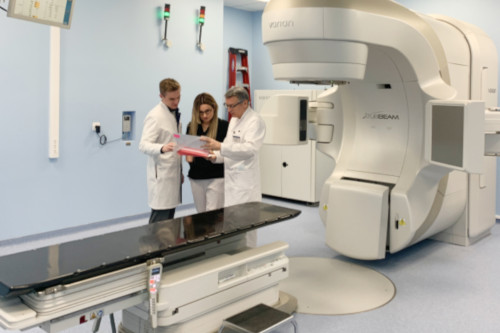
Key points:
- Individual choice of treatment plan – taking into account the diagnosis, prognosis, patient’s condition and severity of symptoms
- Short and gentle courses of radiation – allow for rapid symptom relief with minimal side effects
- Use of high-precision equipment – linear accelerators, 3D/4D CT planning, intensity-modulated radiotherapy
- Outpatient therapy format – if the patient’s condition is stable, radiation can be administered without hospitalization
- Integration with other types of palliative care – including pain relief, psychological and social support, care
- Interdisciplinary approach – radiation therapists, oncologists, palliative doctors, psychologists, nurses and social workers participate in the treatment
Radiotherapy in palliative care is effective even in conditions of limited time and resources, while maintaining the quality and safety of treatment.
Indications for palliative radiotherapy
Pain in bone metastases
Bone metastases are often accompanied by severe pain, which can be sharp, constant, or worsening with movement.
Irradiation of areas affected by the malignant process allows:
- Reduce pain
- Reduce the need for narcotic analgesics
- Prevent pathological fractures
- Improve mobility
- Improve sleep quality
Symptoms of locally advanced cancer
Tumors that are not amenable to surgical treatment can cause organ compression, bleeding, pain, and other unpleasant symptoms. Palliative radiation is used to:
- Shrink the tumor
- Restore the patency of the airways and digestive tract
- Control local inflammation and infection
All of these conditions require prompt intervention, and palliative radiation is often the most effective and affordable method of assistance.
Nervous system problems with spinal cord compression
Spinal cord compression may occur due to metastatic lesions of the vertebrae, which is an emergency condition. Palliative radiation therapy in such cases helps:
- Reduce swelling and pressure on the spinal cord
- Stabilize neurological functions
- Prevent the development of paralysis
- Relieve pain due to compression of nerve structures
The sooner treatment is started, the higher the likelihood of restoring motor and sensory functions.
Symptoms of brain metastases
This condition is often accompanied by severe neurological disorders (headaches, seizures, disorientation). Palliative radiation therapy helps:
- Reduce intracranial pressure by reducing the volume of metastatic foci
- Relieve headaches and nausea
- Stabilize cognitive functions
- Reduce the need for steroids and anticonvulsants
Both single fractions and short-term courses with the possibility of outpatient administration are used.
Symptoms of Head and Neck Cancer
Tumors with such localization can cause difficulty breathing, swallowing and speaking, as well as the formation of wound surfaces with necrosis and infection.
Palliative radiation therapy makes it possible to:
- Reduce the size of the tumor and relieve compression of the airways
- Facilitate the process of eating and restore speech
- Control inflammation
- Reduce the patient's social isolation
Therapy reduces the tumor mass, reduces the risk of asphyxia and improves the patient's ability to eat and communicate, even with an advanced oncological process.
Symptoms of Pelvic Cancer
Pelvic cancer (prostate cancer, cervical cancer, rectal cancer) is accompanied by pain, urinary and bowel obstruction, swelling, bloody and purulent discharge.
Palliative radiation therapy helps:
- Reduce tumor size and reduce pressure on pelvic organs
- Ease urination and bowel obstruction
- Reduce pain and improve the patient's quality of life
Pelvic radiation is often the only way to relieve pain and restore patency of the urinary or intestinal tract without invasive intervention.
Bleeding and foul odors in skin cancer
Skin tumors, especially in advanced stages, can become a source of persistent bleeding, exudation and unpleasant odor. Radiation therapy:
- Effectively stops or reduces bleeding
- Promotes healing of tumor ulcers
- Eliminates odor and reduces the risk of secondary infection
- Improves the appearance of the affected area
Even with extensive skin lesions, radiation therapy remains an effective method of controlling symptoms, facilitating patient care and reducing social isolation.
Side effects

Despite the gentle nature of palliative radiotherapy, side effects may occur. This is especially true when sensitive areas are irradiated or when the patient is very weak. Usually, the symptoms are short-lived and respond well to treatment.
Main side effects:
- Fatigue - increases towards the end of the course of treatment (the symptom goes away within a few weeks)
- Skin reactions - redness, dryness, peeling or darkening of the skin in the irradiated area (with proper care, these manifestations quickly regress)
- Nausea and vomiting - more often occur when the abdomen or brain is irradiated (antiemetics are prescribed to control symptoms)
- Disruption of the defecation process - possible when the pelvis or lumbar region is irradiated, especially with repeated courses (corrected with medication)
- Pain when swallowing - typical for patients receiving irradiation of the neck and chest area (a gentle diet and pain relief therapy are required)
- Exacerbation pain syndrome - short-term increase in symptoms against the background of the start of therapy for bone metastases (usually passes within 24-72 hours)
In palliative cancer treatment, short courses and reduced doses are used, therefore the severity of side effects is lower than with radical radiation or chemotherapy.

Care after palliative irradiation
After completing the course, the patient needs observation. Proper care helps not only to reduce the risk of complications, but also to maintain the achieved effect of treatment.
Main areas of care:
- Monitoring symptoms. It is necessary to track changes in the condition: pain level, neurological manifestations, signs of deterioration in breathing, digestion or psycho-emotional background. Any new complaints should be a reason for immediate medical attention
- Skin care in the irradiated area. Redness and irritation should be treated with mild alcohol-free products, friction, overheating and exposure to ultraviolet radiation are excluded. It is not recommended to use ointments and creams without the consent of a doctor
- Monitoring side effects. Fatigue, nausea, loss of appetite, bowel movements, sleep require symptomatic treatment and changes in daily routine (more rest, fractional meals, drinking regimen)
- Continuation of pain therapy. Even if symptoms decrease after irradiation, it is important to continue taking analgesics according to the scheme prescribed by the doctor. Abrupt discontinuation of drugs can lead to increased pain syndrome
- Psychological support. After completion of therapy, anxiety, emotional exhaustion or depression are possible. In this case, working with a psychologist, support from the family and palliative care will help
- Monitoring the effect of therapy. After 2-4 weeks, the result of the irradiation is assessed (reduction of pain, reduction of compression symptoms, restoration of functions)
Care after palliative radiation therapy should be continuous and interdisciplinary - with the participation of a doctor, nurse, psychologist and, if necessary, a social worker. This allows maintaining the achieved improvement and promptly responding to changes in the patient's condition.
The K+31 Clinic provides high-tech radiation therapy and comprehensive support at all stages of treatment. The medical center has a whole team of specialists - oncologists, radiation therapists, nurses, psychologists. Patients can count on comfort and a decent standard of living even in the most difficult clinical cases.
Our doctors

This award is given to clinics with the highest ratings according to user ratings, a large number of requests from this site, and in the absence of critical violations.

This award is given to clinics with the highest ratings according to user ratings. It means that the place is known, loved, and definitely worth visiting.

The ProDoctors portal collected 500 thousand reviews, compiled a rating of doctors based on them and awarded the best. We are proud that our doctors are among those awarded.
Make an appointment at a convenient time on the nearest date
Other services

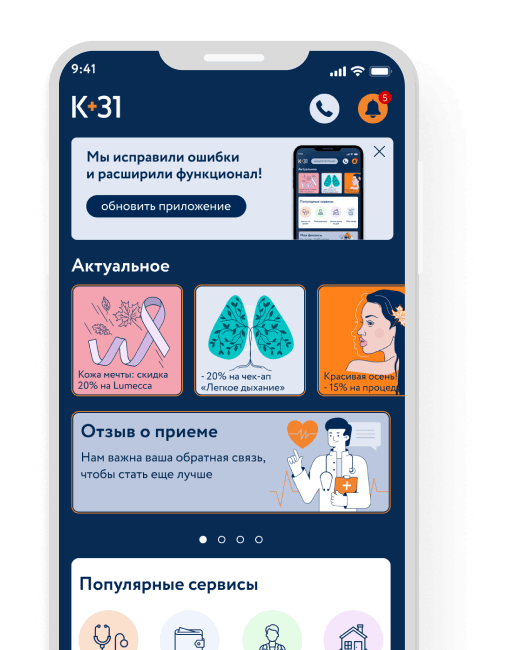









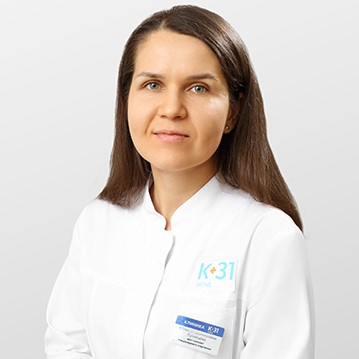








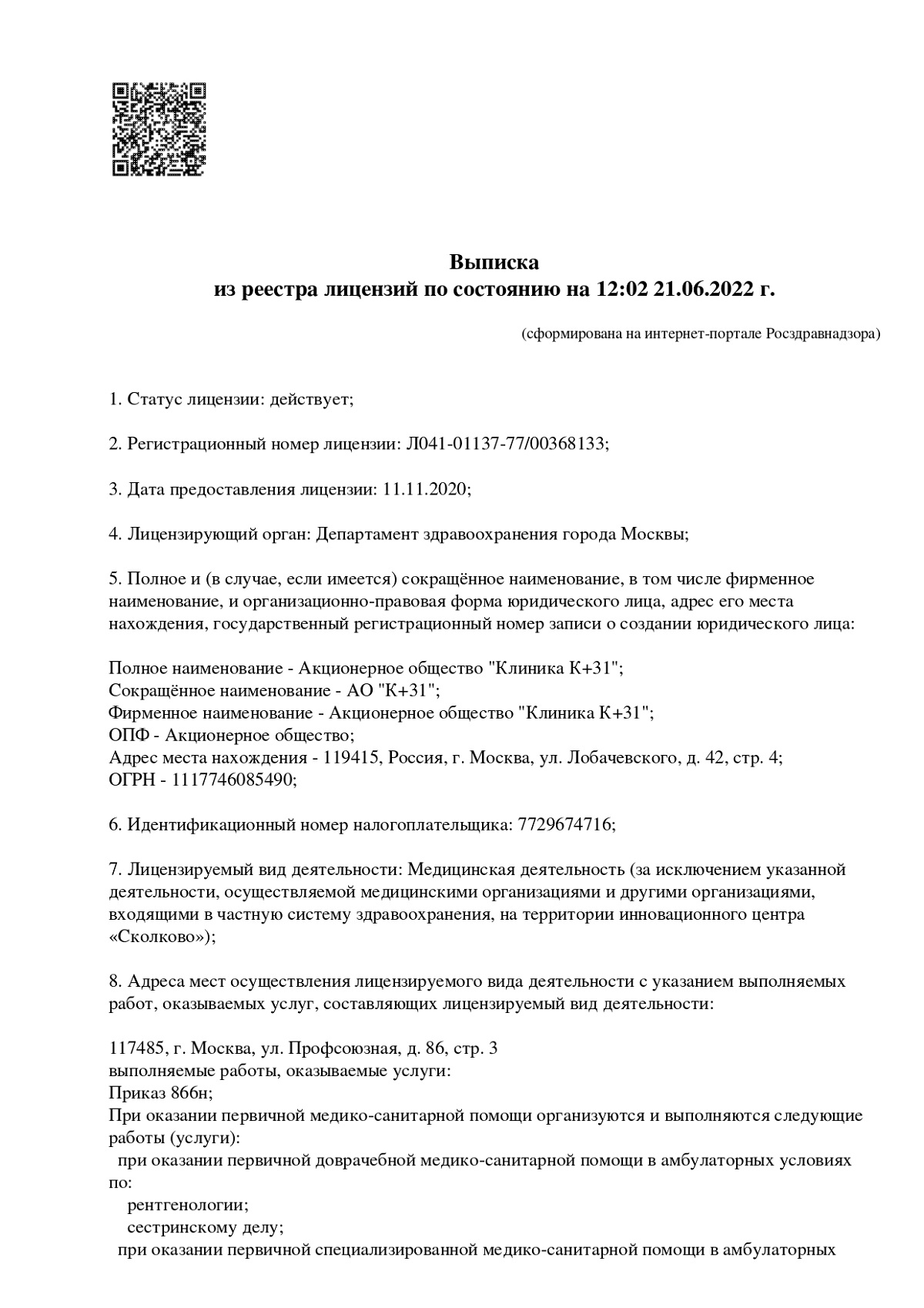
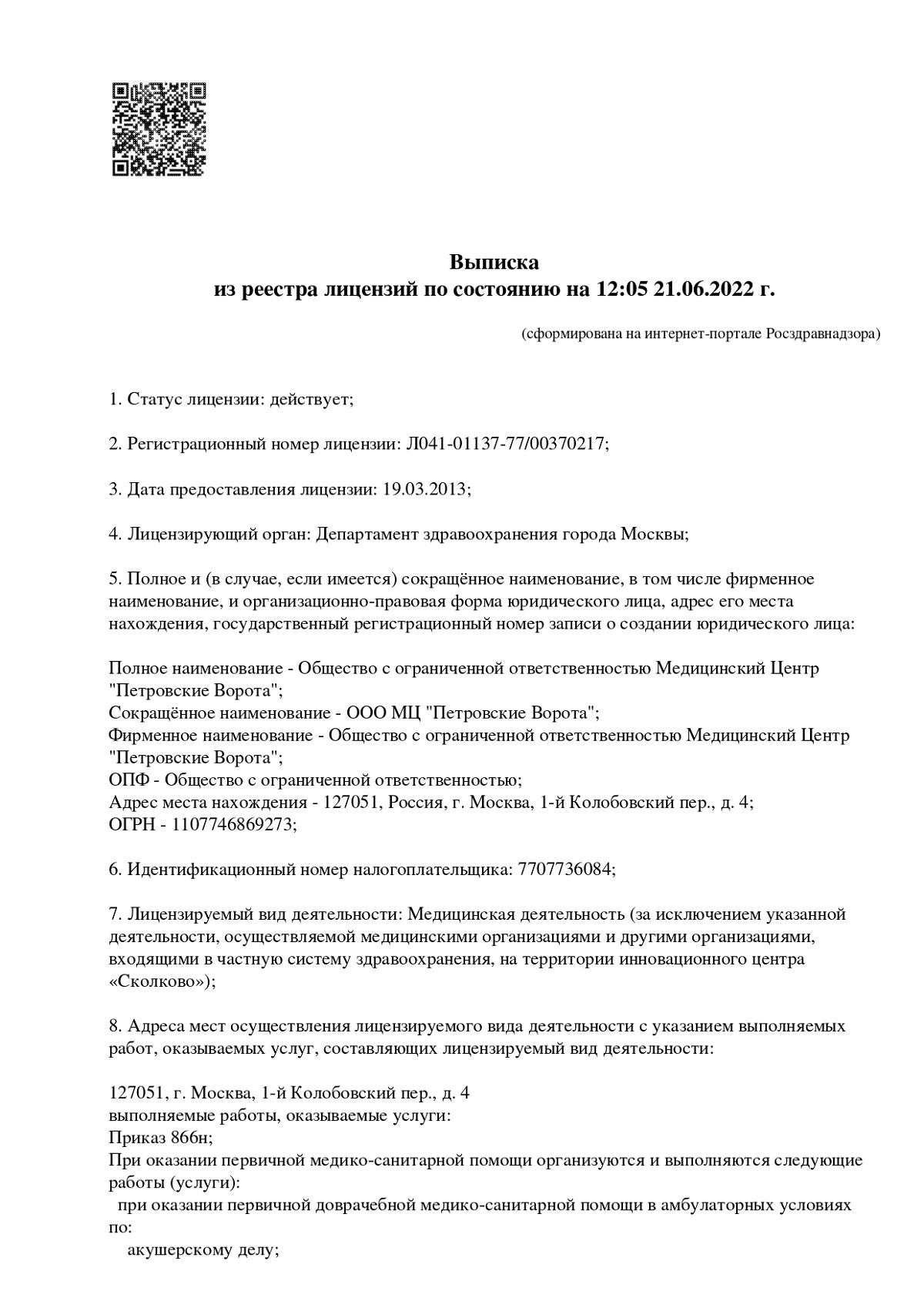




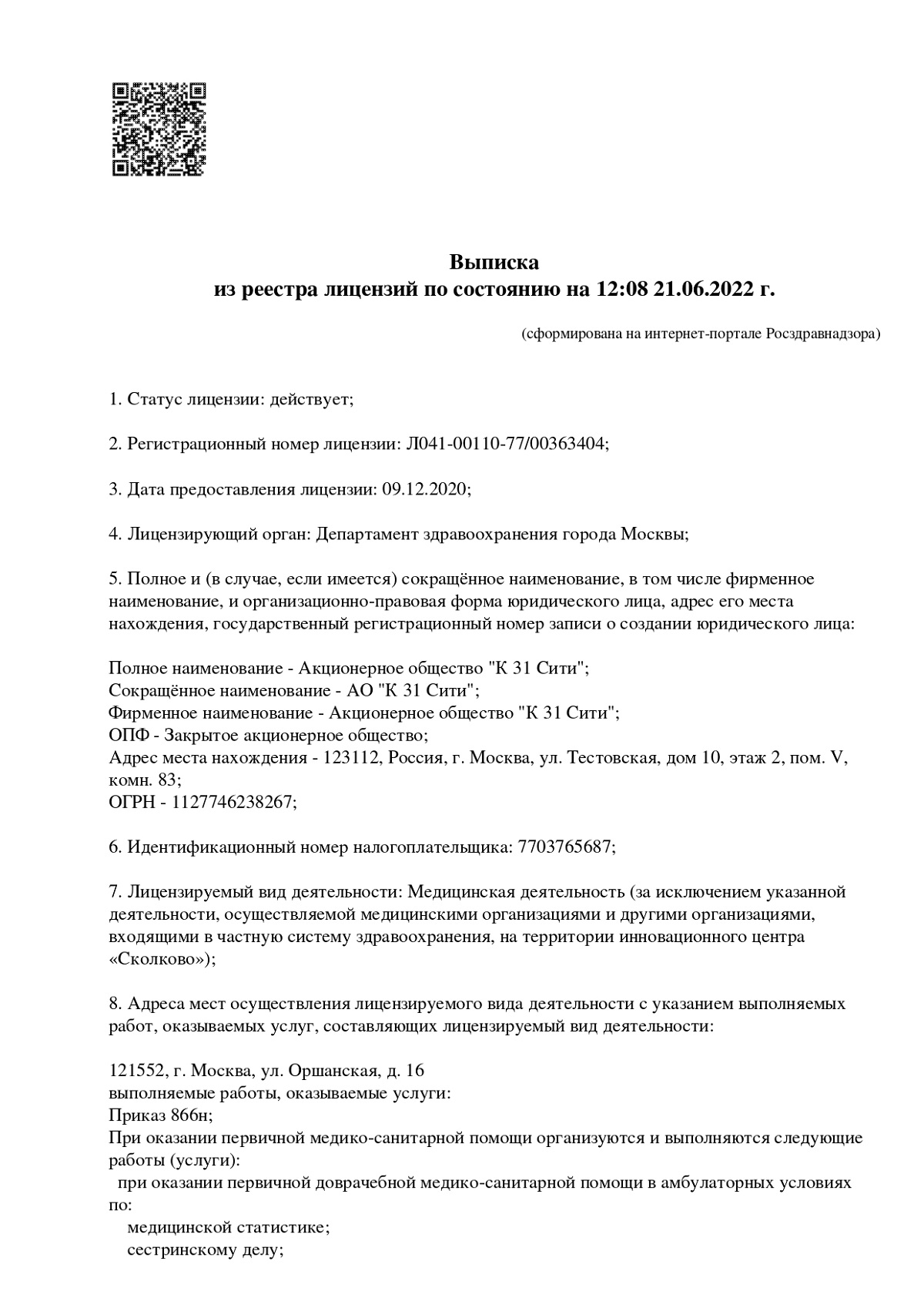
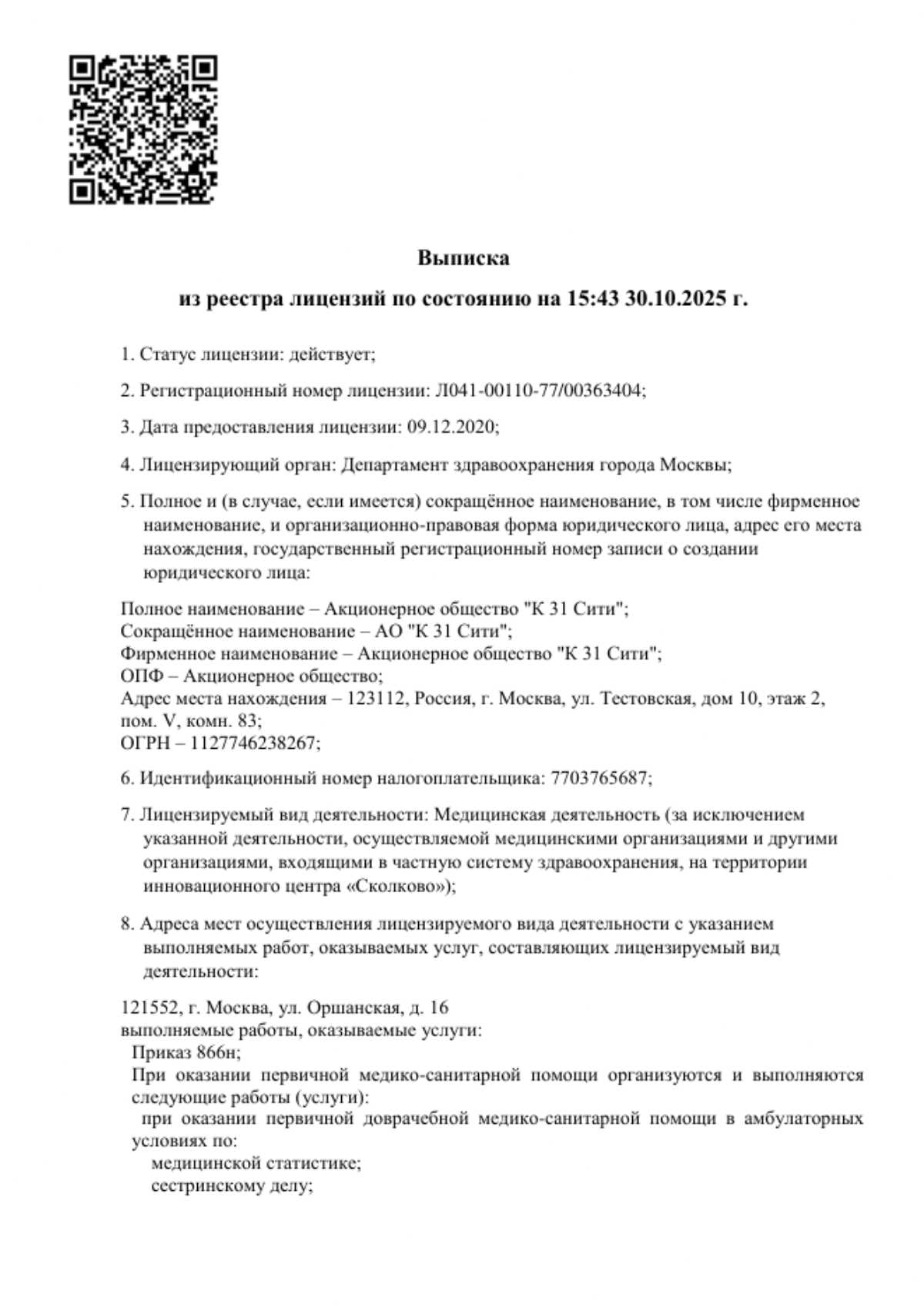







What is palliative radiation therapy
This is the name of a method that uses ionizing radiation, which can alleviate symptoms in cancer patients with incurable or advanced stages.
Unlike radical radiation aimed at destroying a malignant tumor, palliative therapy is aimed at reducing suffering and improving quality of life. With its help, you can:
The course of therapy is selected individually in each specific case. Usually, this is 1-10 sessions with a minimum dose load. Thanks to modern technologies (CT planning, linear accelerators), irradiation is carried out as accurately as possible, which reduces the risk of side effects.
Palliative radiotherapy can be combined with pain relief, psychological support, care and social assistance, which are provided in oncology departments and hospices.